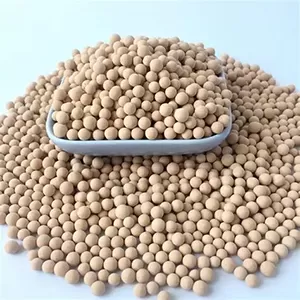molecular sieve and activated alumina are both widely used adsorbents but diverge in key aspects. Molecular sieve’s crystalline structure creates uniform pores (3–10 angstroms), enabling precise molecular sieving—only molecules fitting the pore size are adsorbed. This makes it ideal for separating specific substances, such as removing carbon dioxide from natural gas or drying ethanol to high purity.

Activated alumina, an amorphous aluminum oxide, has irregular, interconnected pores with a broader size range. Its strength lies in high water adsorption capacity, even at high humidity, though it lacks molecular sieve’s selectivity. It adsorbs a wider range of molecules, making it suitable for general drying tasks like compressed air dehydration.
Regeneration methods also differ. Molecular sieve requires higher temperatures (200–350°C) to desorb trapped molecules, preserving its structure. Activated alumina regenerates at lower temperatures (150–200°C), consuming less energy but with slightly lower reuse cycles.
In packing applications, molecular sieve’s rigid structure maintains integrity in high-pressure systems, while activated alumina’s porous nature makes it more prone to dusting if handled roughly. These differences guide their use: molecular sieve for precision separation, activated alumina for cost-effective bulk drying.

